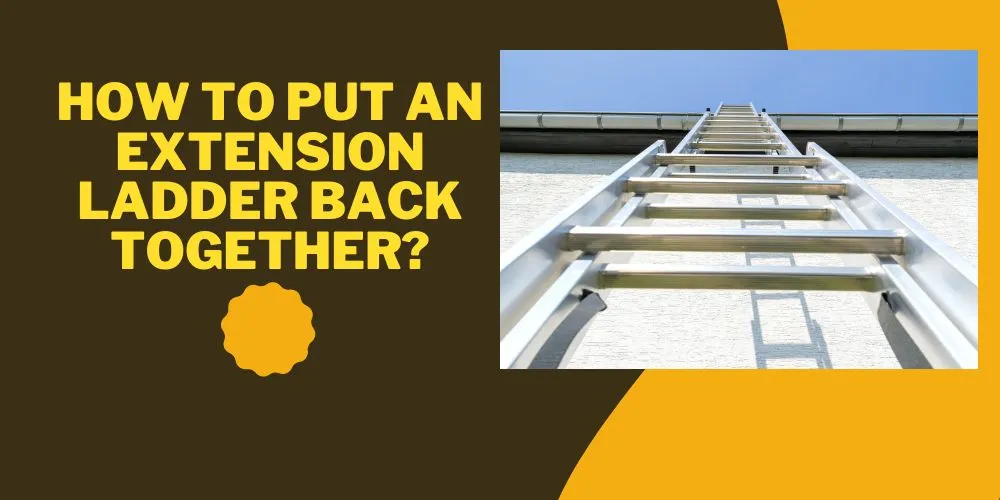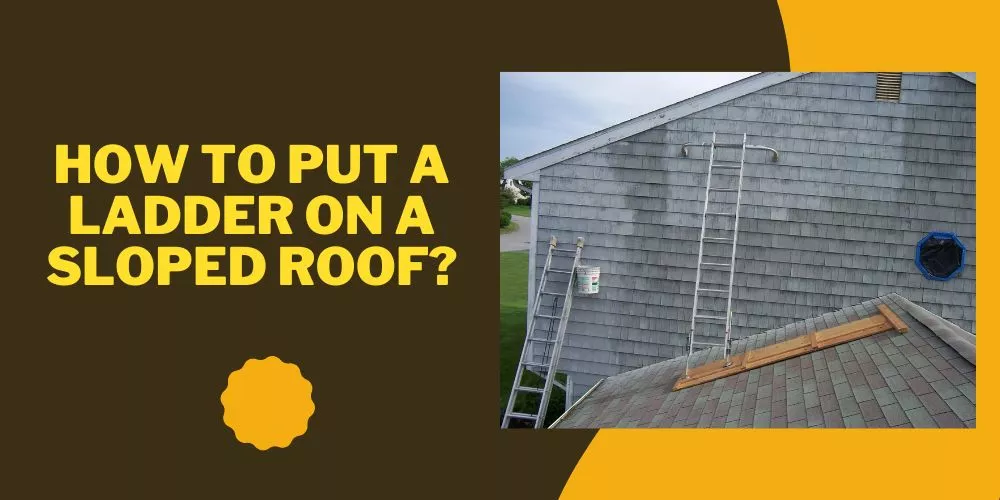In the course of maintaining our houses, we often encounter tasks that involve scaling great heights.
One of the most delicate of such operations is learning how to lean a ladder against chimney for tasks like cleaning, inspection or basic repair.
Though it seems straightforward, improper handling can lead to accidents and damage to your chimney structure.
This article promises to guide you through the step-by-step process on how to safely and properly lean a ladder against your chimney.
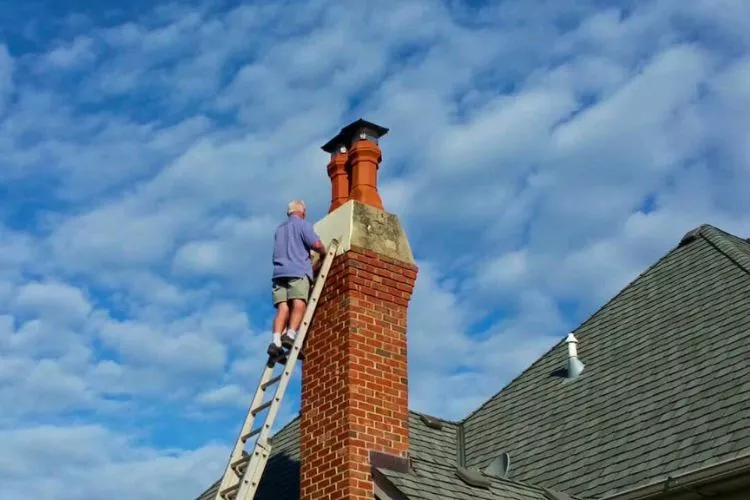
By following these instructions, you can confidently perform various household tasks with a reduced risk of mishap or damage.
How To Lean A Ladder Against Chimney? A Stepwise Process
Climbing up to your roof and leaning a ladder against your chimney is not a simple task. It requires a good understanding of safety procedures and proper technique.
Below is a comprehensive guide on how to safely and correctly lean a ladder against chimney.
🪜 Materials Required
Before beginning the operation, ensure you have all necessary tools, among them:
- An extension ladder
- Ladder stabilizer
- Safety gear (Helmet, Gloves, and Non-slip shoes)
🪜 Safety Precautions
Safety should be your top priority when working at such heights:
- Inspect the ladder to ensure it is sturdy and secure with no defects.
- Avoid leaning the ladder on a rainy or windy day.
- Don’t work alone, have someone spotting the base of the ladder.
- Make sure to wear safety gear at all times.
🪜 Step-by-Step Guide
- Step 1: Choose the Right Position: Ensure you position the ladder on solid and even ground. It should also be near your work area, but not directly under it to avoid falling debris.
- Step 2: Install the Ladder Stabilizer: A ladder stabilizer, or standoff, is a device that will prevent the ladder from leaning directly against the chimney, thereby preventing potential damage. Mount the stabilizer at the top of the ladder according to the manufacturer’s instructions.
- Step 3: Position The Ladder: The general guideline recommended by OSHA (Occupational Safety and Health Administration) states that for every four feet high that the ladder goes, it should be one foot away from the base of the house. The ladder angle should be approximately 75 degrees.
- Step 4: Secure the Ladder: After positioning your ladder, make sure it is secure. The feet of the ladder should be correctly placed so that it is evenly supported. If the ground is uneven, use ladder levelers or dig down the high side rather than building up the low side to make it level.
- Step 5: Climb the Ladder: When climbing up or down, always maintain a three-point contact. Never rush, take one step at a time. Hold onto the rungs, not the side rails, and face the ladder at all times.
- Step 6: Leaning the Ladder against the Chimney: Once you reach the top, slowly move the ladder so that the stabilizers rest evenly against the chimney’s side. Ensure you keep your movements steady and smooth to avoid any shaking or instability.
This guide will surely help you lean a ladder against your chimney in the safest and most efficient manner possible. However, remember that if you are not confident, it’s always safer to hire a professional to avoid any risks or potential accidents.
The Role of Weather Conditions in Roof and Chimney Maintenance
Weather conditions can profoundly impact the process of roof and chimney maintenance. Understanding how different weather conditions affect the safety of using a ladder to access your chimney is crucial to ensure your work is not only efficient but also safe. As such, it’s necessary to consider how the four primary weather conditions—sunny, rainy, windy, and snowy—affect the process.
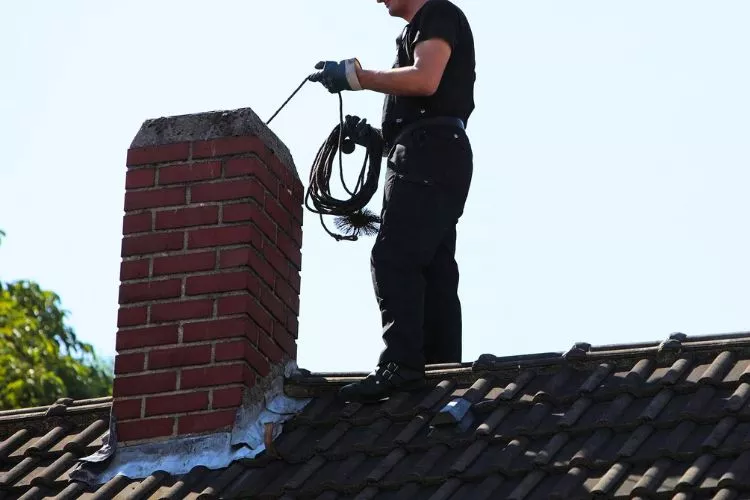
🪜 Sunny Weather
Sunny weather is arguably the best condition for roof and chimney maintenance. The dry and clear conditions not only offer you better visibility but also guarantee that both the ladder and roof will be dry, reducing the risks of slipping. However, intense heat can make you dehydrated. Ensure you have water nearby and take breaks to avoid heat exhaustion.
🪜 Rainy Weather
Rain makes surfaces slippery, and that includes your ladder and rooftops. This increases the risk of slipping and falling, making it one of the worst weather conditions for roof or chimney maintenance. It’s advisable to reschedule your maintenance tasks for a dryer day unless it’s an emergency.
🪜 Windy Weather
High winds can also destabilize your ladder, making it wobble and consequently increasing the risk of accidents. High winds can also blow off debris from trees onto the roof or the ladder, which can make climbing risky. If you find yourself having to do maintenance work on a windy day, double-check your ladder placement and ensure your stabilizer is fitted correctly for added security.
🪜 Snowy or Cold Weather
A snow-covered or frozen roof is incredibly dangerous to walk on. Not only it is slippery, but the added weight of the snow may also pose an unseen risk to the structure. Also, metal ladders can get cold and become slick, making climbing difficult. If you can, it’s best to postpone duty until the weather improves.
In conclusion, weather plays a crucial role in the safety and efficiency of any roof and chimney maintenance task. It’s important to plan and adjust your maintenance chore to the most favorable conditions possible.
Always prioritize safety over urgency when dealing with height-related tasks and keep a keen eye on the weather before you set up your ladder.
Professional vs DIY Chimney Maintenance: A Comparative Guide
When it comes to maintaining chimneys, homeowners often oscillate between doing it themselves (DIY) or hiring a professional. Both choices have their pros and cons, and the decision varies based on factors like safety, costs, and time constraints. Here’s a detailed comparison of the two alternatives.
🪜 DIY Chimney Maintenance
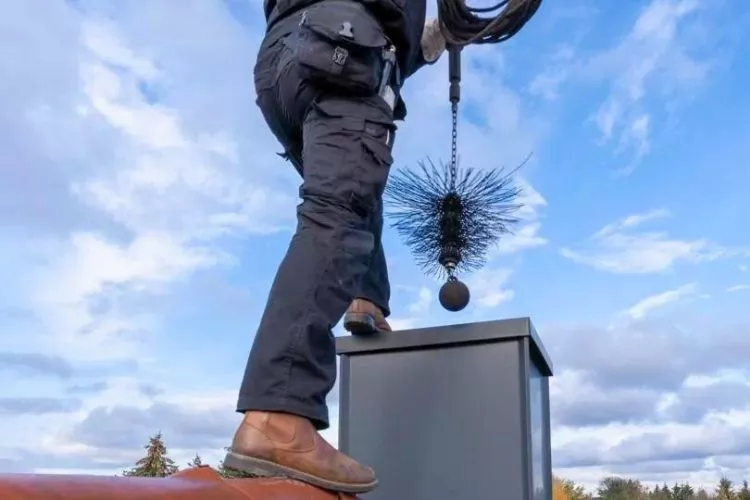
Pros
✅ Cost savings: The most apparent advantage of doing it yourself is the money saved. For those on a budget, conducting DIY maintenance can significantly reduce cost, particularly if you already own the necessary tools.
✅ Learning opportunities: Carrying out chimney maintenance can be an excellent chance to learn about your home’s structure and how to deal with issues by yourself.
Cons
❌ Safety risks: DIY maintenance comes with safety implications. The risk of slips and falls is real, given the height and potential for unstable footing. This is amplified during inclement weather.
❌ Uncertainty in quality: Without the required expertise, there’s a risk of not fully addressing all necessary aspects of chimney maintenance. Hidden issues can remain, leading to long-term damage.
❌ Time-consuming: DIY maintenance usually takes more time, particularly if you’re unaccustomed to the task. It may require multiple days due to weather, trial and error adjustment, or fatigue.
🪜 Professional Chimney Maintenance
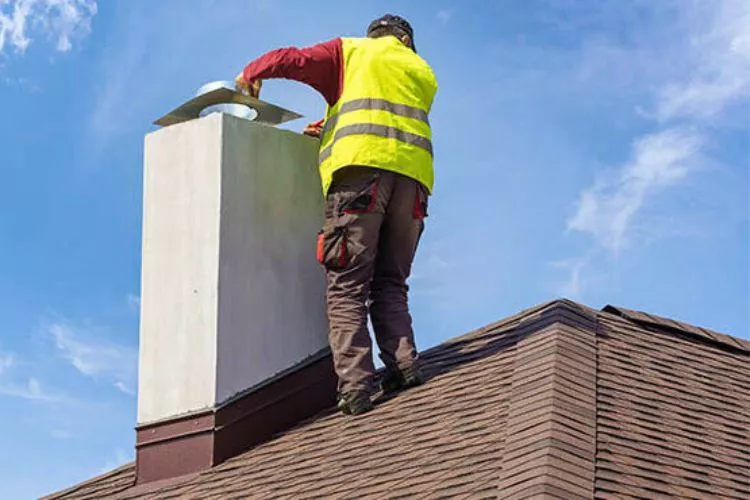
Pros
✅ Professional expertise: A professional will be well-trained and experienced in managing chimneys, enabling them to identify and handle any problem. They’re also equipped with professional tools that can facilitate the effectiveness and efficiency of their work.
✅ Safety: Hiring professionals reduces your safety risk, as they have suitable training and protective equipment.
✅ Time efficiency: Professionals can complete the task within a specific, usually shorter, timeframe due to their experience and improved equipment.
Cons
❌ Higher costs: Hiring a professional generally comes at a significant cost, which can vary depending on the complexity of the task.
In conclusion, the decision to go DIY or hire a professional often boils down to a balance among safety, cost, and time. If you’re well-versed in-home maintenance, equipped with the correct tools, and are not afraid of heights, then DIY might be a workable route. However, if safety is a significant concern and you can afford it, hiring a professional is often the better choice.
Conclusion:
In conclusion, leaning a ladder against a chimney requires careful attention to safety, the right tools, and suitable weather conditions. The ladder’s positioning, securing, and climbing all play crucial roles in maintaining proper balance and stability.
Using a ladder stabilizer is a valuable tool to prevent any damage to the chimney.
Although the process might seem daunting, with patience and adherence to safety protocols, it is certainly achievable.
However, always remember that for those unsure or uncomfortable with heights, it’s better to hire a professional to ensure your chimney maintenance tasks are carried out safely and efficiently.

